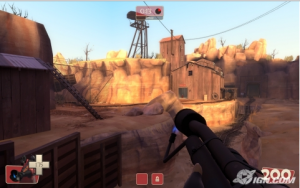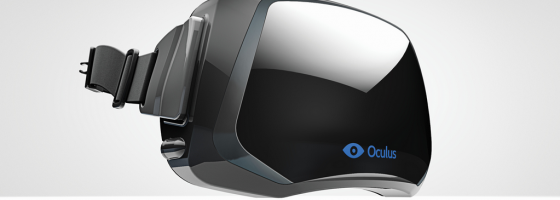Kickstarter has made news over the last year for bringing us a variety of game projects that we wouldn’t see otherwise. One of the biggest successes from Kickstarter would have to be the Oculus Rift: A device that is attempting to do what VR promised in the 90s with allowing us to fully immerse ourselves in the game with an extensive motion tracking system.
But, the Oculus Rift isn’t the main point for today. I know at this moment that there are quite a few Indie developers foaming at the mouth ready to go all in with the device. However I want to pass a word of advice as peripherals have not had a lucky streak.
Peripheral Problems:
For this post, we’re going to define a peripheral as any secondary device not included with the purchase of a game platform. So, the Wii classic controller pro would be an example while the Xbox 360 headset would not.
Since the days of the NES, the use of peripherals was commonplace. Who can forget the NES Zapper, ROB, or the dreaded power glove? The purpose of a peripheral is to give designers a device that handles a specific functionality that they can use for their game design.
Now, you would think that having a device made for a specific use would lead to amazing games, but history has shown that to be the opposite with one exception that we’ll talk about in a minute.
Most peripheral based games rarely make it to a sequel and there are two main problems. First is that the use of a peripheral restricts gameplay as the designer can only work within the functionality of said peripheral. If your device doesn’t have a gamepad or analog stick then your game better not need any movement input.
In response, one game based around a peripheral has the same functionality as other games and it limits the market. The other and more pressing matter is having an audience to play said game.
The problem with peripheral based games comes down to having the market to sustain it. With the first point, if every game follows the same functionality, why should people keep buying games for it? Peripherals always have a niche market compared to the main platform as the simple act of having to buy a secondary device is a major hoop for the general consumer to jump through.

Valve adding Oculus Rift support to their games makes them the first major studio to currently back the Rift.
Going back to the one exception, that honor goes to Rock Band from Harmonix.
Harmonix as we know blew up the music peripheral craze thanks to Guitar Hero and made one of the best selling party games with the Rock Band series. However, while Rock Band was successful, it was not sustainable.
Mounting costs of hardware development and the consumer fatigue of buying more peripherals caused the fan base to slowly disappear eventually signaling the end of Rock Band. In a nutshell, any peripheral based game is in of itself a one game platform.
Now the Rift is a special case as we’re going to talk about next, but there are still hurdles in place for it.
Peripheral Vision:
The Oculus Rift is being promoted not as a game platform but an accessory: Something to enhance a game, but not as the center piece. That is actually a good thing as being an enhancer means that it’s not limited to one specific game or purpose which in turn greatly expands its possibilities compared to other peripherals.
On the other hand, being strictly seen as an enhancer means that there is a good chance that the general public will view it more as a novelty and not as a vital piece for their video game playing needs.
At this point, the most noteworthy supporter of the Oculus Rift would be Valve, who is using it for Team Fortress 2 and Half Life 2. Now, Valve’s support may seem like the sign that the Rift is going to be huge; however there are a few things to remember.
Valve’s use of the Rift is to support an already existing and profitable product. If the Rift fails for any reason or simply the market is not responding to it, Valve still has an amazing game to fall back on. For the indie teams out there who base their futures on each title, rushing to support the new buzz of the industry may not be prudent.

We are seeing more cases of Oculus Rift support from the Indie community, especially those on kickstarter.
It wasn’t too long ago that THQ went all in thinking that tablet gameplay would be the future with the Udraw, which instead turned out to be one of their biggest failures and one of the reasons for the company folding.
Unfortunately supporting a new peripheral is really a catch 22: You need people interested in it before you should start making games for it, but the only way to make people interested is to have games for it.
Now, I know perfectly well that I’m sounding like a wet blanket given the overwhelming support both from Kickstarter and major names in the Game Industry like John Carmack. But history so far is on my side, with peripherals unable to survive longer than a generation.
I hope that this is one of those times where I’m wrong and that in a few years from now a Rift will be viewed as a necessary and vital device for games. I remember being one of the many people who were excited about VR becoming the next evolution of game design and we all know how that turned out. It’s important to be careful about betting on the wildcard: you may win big, or you may lose it all.


